Founded in 1985, the company has been pioneering new technologies in metal detection since its inception. Minelab not only manufactures hobby detectors, but also demining equipment for humanitarian military units.
Innovation and highly specialized research has always been a very strong point of the company. The company's development team was long headed by physicist Candy Bruce, who was also the majority owner of the company. Candy Bruce is undoubtedly one of the most influential people in the development of metal detectors worldwide.
The company has a sophisticated network of distribution and customer service worldwide. Accordingly, Minelab adheres to ISO 9001 standards. High standards of customer care are commonplace at Minelab, as is sophisticated support.
Throughout the years since its inception, the company has been associated with the Candy Bruce name. In fact, it was very hard to imagine this company without this extremely talented developer. But in 2008, Candy decided to sell his stake in the company to a new owner. This became Codan Limited. This company specializes in radio frequency and satellite communications, radios for armies, mines, etc... Anyone who looks at the Minelab detector line will see the unique handwriting of this gifted engineer. As mentioned above, there are/were only a few similar minds on this planet; I can only name Charles Garrett, Jack Gifford (Tesoro), David Johhanson (Fisher), Martin Fray (C.Scope), etc., to name a few. But as is usually the case with such sales, Bruce committed at the time of the sale to continue to lead the development of Minelab until his future retirement.
Today, thanks to the rapid development of detectors for natural gold prospecting, more than 100 engineers are working at Minelab to develop new technologies. Minelab They hold a long line of patents and in the near future all prospectors can look forward not only to new instruments, but above all to new technologies that will take prospecting with detectors further again.
Milestones at Minelab
- 1984 The first Goldseekers 15000 detector
- 1985 founding of the company Minelab
- 1991 Minelab's first multi-frequency detector. BBS technology
- 1993 first underwater detector from Minelab - equipped with BBS technology
- 1994 first Musketeer series detector
- 1995 first pulse detector in the company's range
- 1999 first Explorer series detector - multi-frequency FBS technology, "S design" detector.
- 2002 first in the series of pulse detectors equipped with DVT technology
- 2005 V-Flex technology for VLF detectors Minelab
- 2013 FBS2 technology - CTX 3030 metal detector
- 2014 SDC 2300
The detectors are ordered from oldest to youngest. Only instruments that are no longer in production are shown in the table.
|
The Goldseekers 15000 metal detector was the first instrument manufactured by Minelab back in 1984. The detector was designed for gold prospecting and used VLF technology.
|
Here you can download the manual
Goldseekers.pdf
|
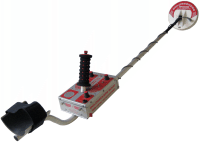 |
| The Minelab GT 16000 metal detector was launched in November 1987. Like its predecessor, and a number of successors, it was designed primarily for finding natural gold. The detector used VLF technology, weighed 1.6kg and operated at 7.8kHz |
You can download the manual here
GT16000.pdf
|
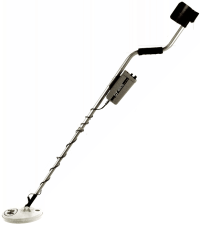 |
|
Metal Detector Minelab The Eureka Ace was one of the first dual detectors on the market. Its main purpose was to search for natural gold in Australia's problematic soil conditions. The detector used VLF technology, weighed 1.6 kg and used two operating frequencies of 8kHz and 19.5kHz
|
You can download the instructions here
Eureka Ace.pdf
|
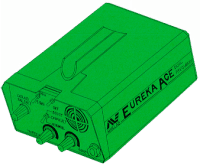 |
| The Minelab FT 16000 metal detector went into production in February 1990. The detector was designed to search for natural gold. The detector used VLF technology, weighed 1.6 kg and operated at an operating frequency of 7.8kHz |
Here you can download the manual
FT16000.pdf
|
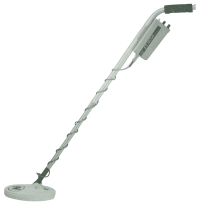 |
| Metal detector Minelab Klondike was in production for a relatively short period of time. The instrument was designed to search for natural gold. It used VLF technology, weighed 1.6 kg and operated at 7.8 kHz. |
You can download the manual here
Klondike.pdf
|
 |
| Metal Detector Minelab The Eldorado Mark II was launched in March 1990. Like its predecessors, it was designed primarily for gold prospecting. It used VLF technology. |
Here you can download the manual
Eldorado Mark II
|
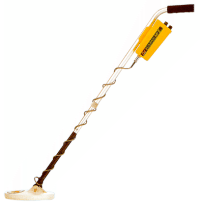 |
| Metal Detector Minelab The Sovereign was Minelab's first multi-frequency detector on the market. It used BBS technology. It went into production in January 1991. It was the company's first detector designed primarily for finding coins and jewelry. BBS technology, weighing 1.6kg and operating frequency 1.5kHz to 25.5kHz |
You can download the manual here
Sovereign.pdf
|
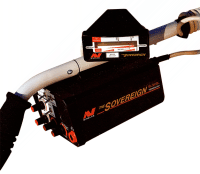 |
| Metal Detector Minelab The XT 17000 was launched in January 1993. The instrument was designed to search for natural gold. It used VLF technology, weighed 1.6 kg and operated at 6.4kHz and 32kHz |
You can download the manual here
XT17000.pdf
|
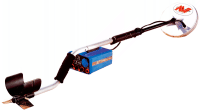 |
|
Metal Detector Minelab Excalibur - Minelab's first device designed to search for coins and jewellery underwater. Like the Sovereign, it used BBC technology. It came on the market in August 1993. BBS technology, weighed 1.9kg and operated at feces 1.5kHz to 25.5kHz
|
You can download the manual here
Excalibur.pdf
|
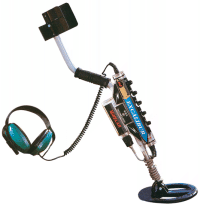 |
| The Minelab Sterling metal detector was designed to find coins and jewellery. Minelab For the first time, this detector has taken into account the requirements of European prospectors. The production time was relatively short. The detector went into production in August 1993. The device used VLF technology, weighed 1.2kg and operated at 5kHz |
Here you can download the manual
Sterling.pdf
|
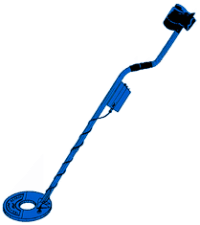 |
| Metal Detector Minelab The Tribune was the first device to be referred to as a "relic". It went into production in 1993. It was generally designed for classical coin and jewelry searching in all environments. The instrument used VLF technology, weighed 1.2 kg and operated at 5 kHz |
Here you can download the manual
Tribune.pdf
|
 |
| Metal Detector Minelab The Gold Striker was a device designed to search for natural gold and the finest objects. It went on sale in November 1993. The device used VLF technology and a single, relatively high, frequency of 32kHz |
You can download the manual here
GoldStriker.pdf
|
 |
|
Metal Detector Minelab The Sovereign XS was the first improvement to the Sovereign series, which is still in production today. It came on the market in 1994 and was designed for universal hobby searching. The instrument used BBS technology, weighed 1.6kg and used a frequency band of 1.5kHz to 25.5kHz
|
You can download the manual here
Sovereign XS.pdf
|
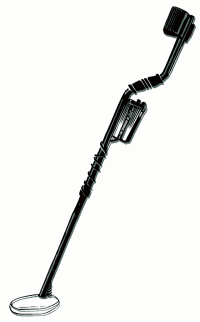 |
| Metal Detector Minelab Musketeer came on the market in February 1994. This was the first version of the Musketeer and other versions soon followed. Although the Minelab was already using 2D probes at this time, the instrument was equipped with a concentric probe at its base. VLF technology, a weight of 1.6 kg and an operating frequency of 5 kHz. |
Here you can download the manual
Musketeer.pdf
|
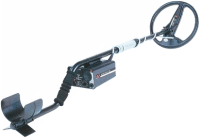 |
| Metal Detector Minelab SD 2000. Production of this detector started in April 1995. It was the first PI detector in the company's range. It is not without interest that the detector was equipped with an 11" 2D probe right from the start. PI technology, detector weight 2,4 kg. |
Here you can download the manual
SD2000.pdf
|
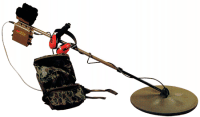 |
| Metal Detector Minelab SD2100. A year later, a new version of the two-thousand was launched on the market, which had improved separation properties. The instrument used new patented MPS technology. PI detector, weight 2.4 kg. |
Here you can download the manual
SD2100.pdf
|
 |
| The Minelab XT 18000 metal detector went into production in April 1997. Like the entire previous XT series, it was designed to search for natural gold. It was the last model and the company did not produce another type. VLF technology, detector weight 1.6 kg, operating frequencies 6.4kHz, 20kHz and 60kHz. |
Here you can download the manual
XT18000.pdf
|
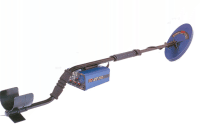 |
| Metal detector Minelab Musketeer XS. It was an improved version of the Musketeer. From the XS, the Colt and XS pro versions were subsequently derived. The detector used VLF technology, weighed 1.6 kg and used an operating frequency of 5kHz. |
Here you can download the manual
Musketeer XS
|
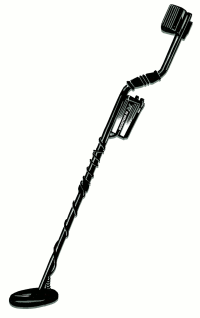 |
| Metal Detector Minelab The Sovereign XS-2 and XS-20 were in production from early April 1998. The instrument was primarily designed to make the search as universal as possible. BBS technology, detector weight 1,2kg, working frequency 1,5kHz to 25,5kHz. |
Here you can download the manual
SovereignXS2.pdf
|
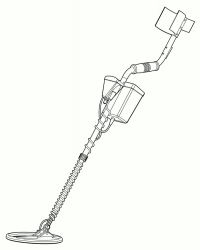 |
| Metal detector Minelab Excalibur 800 went on sale in April 1998. The instrument was designed to search for coins and jewellery underwater. The technology used was BBS, the weight of the detector was 1.8kg and the working frequency was from 1.5kHz to 25.5kHz. |
Here you can download the manual
Excalibur 800.pdf
|
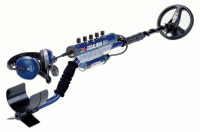 |
| Metal Detector Minelab SD 2200d. A new and improved version of the 2000 series was launched in May 1998. The instrument was designed to search for natural gold. PI technology used, weight of the detector 2,4kg. |
Here you can download the manual
SD2200d.pdf
|
 |
| Metal Detector Minelab Musketeer Colt & XS Pro. Both detectors were designed to search for coins and jewellery. The Colt version was probably the easiest detector ever Minelab made. You can find photos of it in the instructions. VLF technology used, detector weight 1,6kg, working frequency 5kHz. |
Here you can download the manual
Musketeer Colt, XS.pdf
|
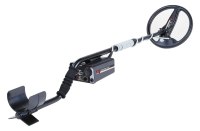 |
|
Metal Detector Minelab Excalibur 1000 was a version of the Excalibur with a larger 10" probe.It went into production in July 1998. The detector used BBS technology, weighed 2kg and operated at frequencies from 1.5kHz to 25.5kHz.
|
Here you can download the manual
Excalibur1000.pdf
|
 |
| The Minelab SD 2100e metal detector was another modification of the 2000 series. The instrument went into production in August 1998. Like all the other detectors in this series, it was designed primarily for finding natural gold. The detector used MPS technology and was a pulsed instrument. The weight of the detector was 2.4kg. |
Here you can download the manual
SD2100e.pdf
|
 |
| Metal Detector Minelab Relic Hawk. This was a very interesting company. The device was a classic VLF detector, where Minelab tried to maximize the range. The detector used an operating frequency of 5kHz and as the name suggests, it was a "Relic" detector. The downside of the device was its respectable weight of 2.6kg, which is a lot for a VLF detector. |
Here you can download the manual
RelicHawk.pdf
|
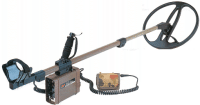 |
| Metal detector Minelab Golden Hawk was similar to Relic, but designed to find natural gold and the smallest low-conductivity objects. The detector went on sale in September 1999. VLF technology, weight 2.2kg and operating frequencies 6.4kHz, 20kHz and 60kHz. |
You can download the manual here
GoldenHawk.pdf
|
 |
| Metal Detector Minelab Explorer S Minelab's first multi-frequency detector using FBS technology. The detector literally looked like a UFO in the first months of sales. The technology used fascinated a large number of prospectors around the world. It is also worth mentioning that it was the first detector to use an axis guide rod design. The detector used FBS technology and went into production in December 1999. It weighed 1.7kg and operated at frequencies from 1.5kHz to 100kHz. |
Here you can download the manual
Explorer S.pdf
|
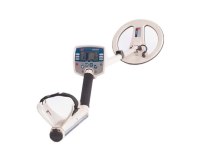 |
| Metal detector Minelab The Explorer XS was similar to the "S". The detector is also owned by a number of prospectors in the Czech Republic. According to many of them, the XS was the best detector of the Explorer series, which is of course a subjective impression that may also have been caused by the price the device was sold for at the time. Thus, while it is probably not the best Explorer, the detector cannot be denied to be one of the finest detectors produced to date. The instrument uses multi-frequency FBS technology, weighs 1.7kg and operates at frequencies from 1.5kHz to 100kHz. |
You can download the manual here
Explorer XS.pdf
|
 |
| Metal Detector Minelab The Sovereign XS-2a Pro came on the market in March 2000. The detector was designed to find coins and jewellery. Like its previous Sovereign versions, it used BBS technology. The weight of the detector was 1.2kg and it operated at a frequency of 1.5kHz to 25.5kHz. |
You can download the instructions here
Sovereign XS-2a.pdf
|
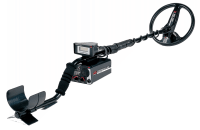 |
| The Minelab GP Extreme metal detector was the first instrument to use both Minelab technologies for PI instruments (MPS and DVT). The instrument was designed for gold prospecting. However, in European conditions it proved to be suitable for deep searches of the most delicate objects. The detector weighed 2.4 kg. |
Here you can download the instructions
GPExtreme.pdf
|
 |
| Metal Detector Minelab Sovereign Elite, the predecessor of today's GT model, manufactured from October 2002. The detector was designed to find coins and jewellery. It used BBS technology, weighed 1.2kg and operated at frequencies from 1.5kHz to 25.5kHz. |
Here you can download the manual
Sovereignelite.pdf
|
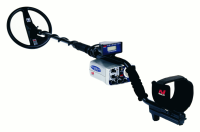 |
| Metal Detector Minelab GP 3000 was designed primarily for finding natural gold. It used MPS and DVT technologies. The detector weighed 2.4 kg and went into production in April 2003. |
Here you can download the manual
GP3000.pdf
|
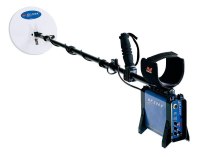 |
| Metal Detector Minelab The Explorer II was a follow-up to the successful XS version. The instrument was designed for the most versatile search in all soil conditions. It used FBS technology, weighed 1.7 kg and operated at frequencies from 1.5 kHz to 100 kHz. |
You can download the manual here
Explorer II.pdf
|
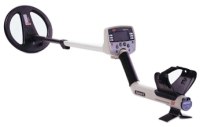 |
| Metal Detector Minelab The Quattro MP seemed at first to be a simplified version of the Explorer. Over time, however, many prospectors have found it to be a very distinctive instrument. It was very popular in the Czech Republic and is still used by many prospectors today. It went into production in 2004 and, like the Explorer, uses FBS technology. The weight of the detector was 1.7kg and the working frequency was 1.5kHz to 100kHz. |
You can download the manual here
Quattro MP.pdf
|
 |
| Metal Detector Minelab GP The 3500, launched in March 2005, was the successor to the successful 3000 and Extreme versions. This detector also used MPS and DVT technologies. The weight of the detector was 2.4kg. |
Here you can download the manual
GP3500.pdf
|
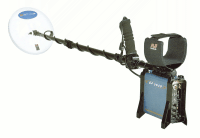 |
| Metal Detector Minelab The X-TERRA 30 went on sale in November 2005. It was the first "small" hobby detector from Minelab. The company thus began to fill the segment of the cheapest digital instruments. The detector used modified VLF technology, which Minelab called VFLEX. The device used a single operating frequency of 7.5 kHz and weighed 1.3 kg. |
You can download the instructions here
X-Terra30.pdf
|
 |
| Metal Detector Minelab The X-TERRA 50 went on sale at the same time as the technically simpler X-Terra 30. The 50 worked with two frequencies, 7.5kHz and 18kHz. The weight of the detector was the same as the 30, 1.3kg. |
Here you can download the manual
X-Terra 50.pdf
|
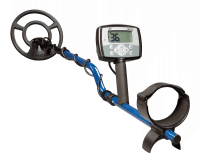 |
| Metal detector Minelab The X-TERRA 70 has been in production since March 2006. The instrument was therefore launched with some delay compared to the simpler versions. Apart from the possibility to use 3 working frequencies, the detector appealed to searchers mainly with the so-called Prospecting mode, which proved to be very effective for tracking small objects. Three operating frequencies 3kHz, 7.5kHz and 18kHz, detector weight1.4kg. |
Here you can download the manual
X-Terra 70.pdf
|
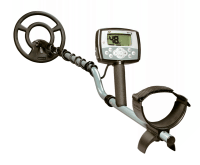 |
| Metal detector Minelab The Explorer SE is essentially identical to the SE professional version produced today As with the first XS version,the Explorer SE has a very good design. The detector used most of the programs of previous versions and had improved target response in waste infested areas. The weight of the detector was 1.7kg and the operating frequency from 1.5kHz to 100kHz. |
You can download the manual here
Explorer SE.pdf
|
 |
| Metal Detector Minelab The GPX-4000 did not gain much traction in the market. It started production in late 2006 but was replaced fairly soon by the GPX 4500. Like its predecessors, it was built on MPS and DVT technology. The weight of the detector was 2.4kg. |
Here you can download the manual
GPX4000.pdf
|
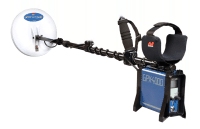 |
Currently, Minelab manufactures several model lines of detectors based on different technologies. The Go Find 20, 40 and 60 series detectors for beginners. Classic multi-frequency detectors with VFLEX technology - X-Terra 305, X-Terra 505, X-Terra 705.
Multifrequency detectors with FBS E-Trac and Safari technology. CTX 3030, which uses the improved multifrequency FBS2. Multifrequency BBS technology is also used by the underwater Excalibur II. GPX 4500, SDC 2300, GPX 4800, GPX 5000 and GPZ 7000 series pulse detectors designed primarily for natural gold prospecting. Simpler VLF detectors at high operating frequency designed for the Eureka Gold and Golden Monster 1000. A very special part is the military division. However, these detectors are not intended for general sale.



 A teď budu čekat na počtení o Tesoru
A teď budu čekat na počtení o Tesoru 









 to by byla teprve pecka.
to by byla teprve pecka. 
 to se povedlo
to se povedlo



























































